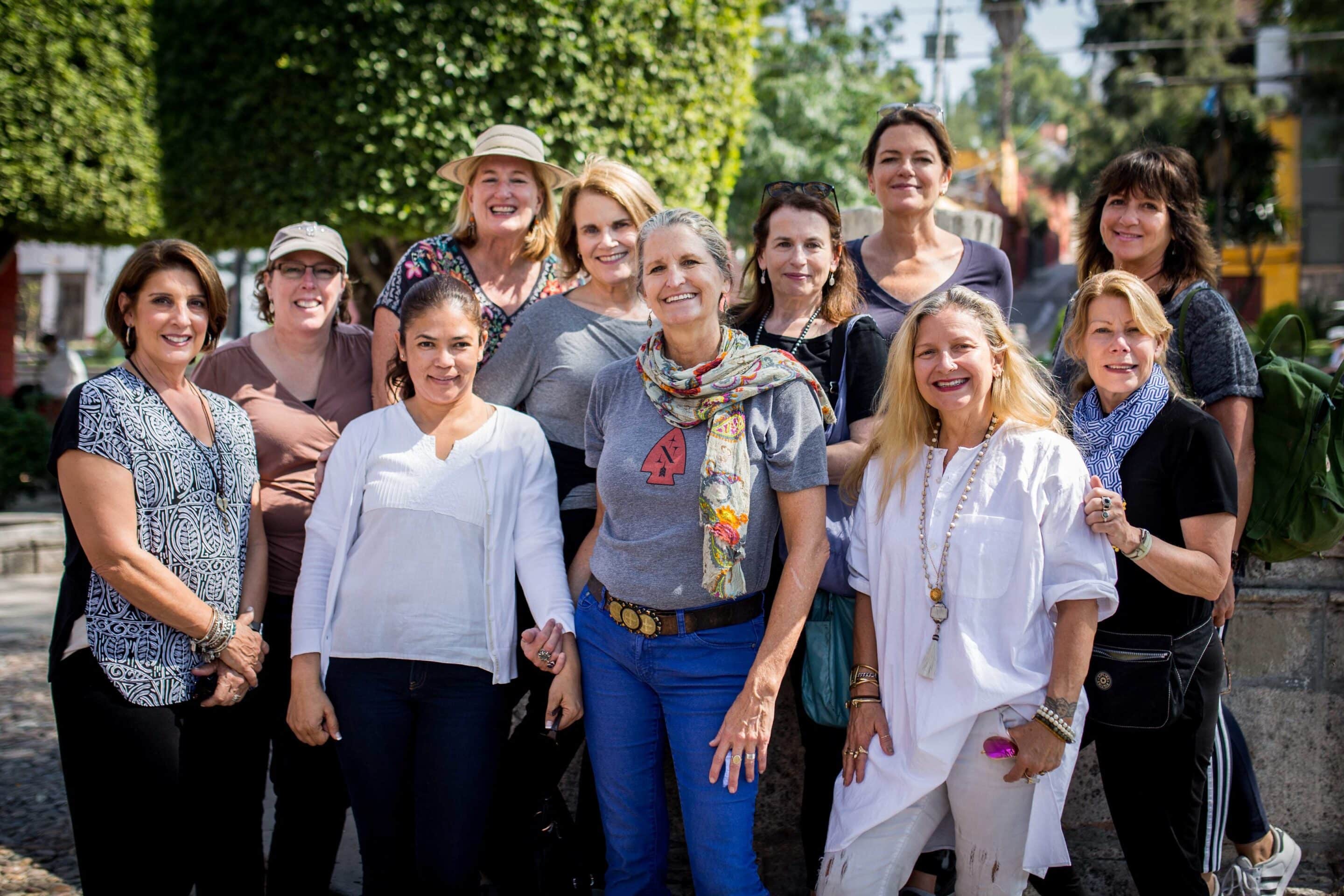The country is opening up again. People are stumbling out of quarantines and social bubbles like cave dwellers into the sun. Among the many questions about how people will adjust to a post-pandemic world is what will happen to the midlife divorce rate, which has been rising precipitously over the past decades and may just spike after all the (not-always-joyful) togetherness of the past 14 months.
As more couples have been following Fleetwood Mac’s lyrical suggestion to “go your own way,” many of us have wondered what’s been fueling the increase—apart from the pandemic stress. Duos who always had a rocky union are calling it quits. And even those “have it all” couples—the ones with the glossy kids and careers, the HGTV-ready house, and the “come on baby” body language at the neighborhood block party—are packing it in.
Among U.S. adults ages 50 and older, the divorce rate has doubled since the 1990s.
The stats are shocking. Among U.S. adults ages 50 and older, the divorce rate has doubled since the 1990s, according to the National Center for Family and Marriage Resarch, while divorce rates for those in their 20s and 30s has dropped 21 percent. What’s more, 66 percent of Boomers said they would prefer divorce to an unhappy marriage, compared with 44 percent of younger Americans. So forget the stereotypes of hunkering down with spouses and daydreaming about beach condos as the years pass; we’re actually choosing separate futures more and more often.
What’s going on? Surely, there’s a societal sea change at work. The Silent Generation was raised to shut up and keep paddling when they hit bumpy marital waters, but today we are much more focused on finding our own individual bliss. Which makes us approach marriage from a much stronger free-agent stance.
Beyond that, a few crucial forces emerge.
Read More: “I’m Afraid I’m Heading for a COVID Divorce”
The Rising Midlife Divorce Rate: When Kids Provided the Glue
The transition from a relationship being “all about the kids” to “just the two of us” is hugely responsible for some of these splits. If a couple had been staying together for the kids’ sake, once that reason to be together decorates her dorm room, it can be the right time to break up. Beyond that, the intense focus on the children (even if you aren’t a helicopter-y parent) can give spouses plenty of room to grow apart.
“An empty nest definitely causes a divorce spike, more often initiated by the woman. Reasons are often that they have poured all energy and relating into their children and in the process become somewhat strangers to each other,” says Gail Saltz, MD, Associate Professor of Psychiatry at the New York Presbyterian Hospital. “With partners who did not nurture their relationship, when the kids go, they look at each other and say ‘I’m not in love with you anymore.’ They are so distant, they don’t even feel like trying to work on it.”
That certainly describes what happened to Rachel, 54, a graphic designer in Riverside, CT. “I knew our lives were moving in different directions for years. I was completely stressed trying to keep the plates spinning for our family—we have four kids, an old Chihuahua, and an ancient cat—while maintaining my design work,” she explains.
“An empty nest definitely causes a divorce spike, more often initiated by the woman.”
“My husband Steve and I had so little time together, but what we did have, we spent talking about the kids, their activities, their standardized tests. When our youngest went off to college, Steve and I had these deadly silences while eating dinner. We had no real common ground or connection anymore. I remember we once went out for drinks at a new wine bar and we had such a boring time together, I thought, ‘If I weren’t married to this guy, I’d never go out on a date with him!’ It was pretty heart-breaking.”
The couple tried a few counseling sessions, took up golf together, and booked a romantic weekend away. But Rachel soon decided it wasn’t worthwhile to continue living together. “I looked at Steve and thought, ‘We were really good parents together.’ But that wasn’t enough to keep us together.” They decided to divorce before their youngest started sophomore year at college.
Gray Divorce and The “Fulfill Me” Mantra

That’s not the only reason why our generation is uncoupling in droves. Others say the divorce boom reflects that we’re living longer and are all about making every moment count.
“People feel more entitled to living fully. They’ve contributed to raising children, and now they want an emotional journey,” according to Lili Vasileff, a certified financial planner and president of Divorce and Money Matters (a divorce financial planning business), who added, “They may have (decades) ahead and don’t want to be unhappy anymore.”
Monica, 62, who lives outside of Atlanta, hadn’t thought of herself as unhappy exactly, but then she began to wonder about paths not taken. “When I was busy raising our family, I didn’t have time to question if I was fulfilled, what my purpose was, and whether my marriage was a good one or not. But as my husband Robert and I hit our mid-50s, I began to think…how do I want to spend what will undoubtedly be the later chapters of my life?”
The divorce boom reflects that we’re living longer and are all about making every moment count.
Always interested in the arts, Monica began volunteering at a local organization that immerses underprivileged children in music and offers free lessons. Fired up, she started to organize concerts with guest artists…while her husband stayed in place.
“Rob had always been one of those guys who works hard at his job during the week and spends his off hours relaxing in front of the TV, watching his teams. He wanted to his life to be slowing down—‘We deserve to take it easy at this stage,’ he’d say. But I wanted my life to be speeding up—I wanted richer, more meaningful experiences.”
With these different views of their golden years, Monica and Robert separated.
The Second Time Around is Less Stable
The other big force at work that factors into causes of the rising rate of gray divorce is the fact that the older you are, the more likely you are to be on a second or third marriage—or beyond. And those subsequent remarriages tend to be less stable than first unions. According to the Pew Research Center, the divorce rate among re-married Boomers is double the rate of those who have only been married once (16 vs. eight per 1,000), and it’s significantly higher among those couples who’ve been hitched fewer than 10 years versus those who’ve been wed longer.
The divorce rate among re-married Boomers is double the rate of those who have only been married once.
Listen to how Marti, a real estate agent in Phoenix, puts it. “I was married for over 20 years, till husband #1 left me for a 25-year-old, like in a bad movie. When I met husband #2 online, he seemed great. He was great. It was a happy whirlwind romance. But after we married, I began to realize just how serious his drinking problem was, and without having a history together—well, when the going got tough, I got going. There wasn’t enough invested to keep me there, shallow as it may sound,” she says sheepishly.
There’s no denying that a brief marriage is usually easier to end than a long one. Add to that the way our culture is becoming less attached to the institution of marriage, and it seems that the bonds are becoming easier to break.
Battening Down the Hatches
If you’re reading this and feeling as if you may be hurtling towards divorce, here’s some advice.
- Recognize you aren’t the same people today as you were when you wed and that marriage is a dynamic and evolving relationship. People change, and people can change. Each of you is capable of growth and should have a chance to prove that before saying, “Done!”
- Bolster communication like crazy. “The most important thing is to listen to your partner’s emotions and communicate the message, ‘If you’re unhappy with something, the world stops, I listen, and we do something about it,'” says marriage researcher John Gottman, author of 40 books on couplehood. He says that making your partner feel cherished is vital to a union’s ongoing success.
- Call in a professional. Our generation came of age with peace, love, and understanding – and shrinks. Most of the time, it’s worthwhile to talk to a counselor together. Even if you decide the marriage can’t be salvaged, you’ll hopefully lay the groundwork for a more compassionate separation.
Read More: COVID Was the Opportunity I Needed to Leave My Husband and Restart My Life
A version of this article was originally published in October 2017.






















0 Comments